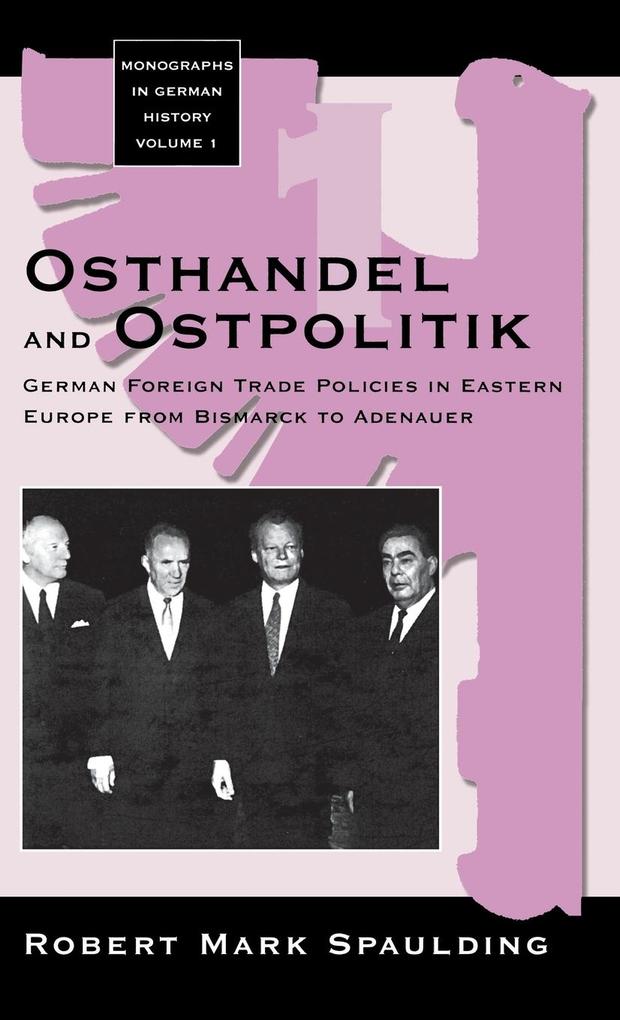
Zustellung: Do, 10.07. - Mo, 14.07.
Versand in 7 Tagen
VersandkostenfreiBestellen & in Filiale abholen:
Eclipsed by the scope of the Atlantic economy, obscured by Anglo-German rivalry, and nearly destroyed by the post-1945 division of Europe, the flow of goods across East Central Europe has been, nonetheless, an immensely significant pattern of European economic exchange. For Germany, the Osthandel (Eastern trade) was both a blessing and a curse; its bounty provided much of the raw material for the rise of German economic and political power in Europe, while its lure tantalized German ambitions to the point of madness. Despite the enduring importance of this commerce, no monograph has yet made this pattern of trade the centerpiece of its treatment of German-East European relations. This study puts this important pattern of German-East European trade into the center of discussion and views an extended period of German foreign policy toward Eastern Europe through this lens.
Inhaltsverzeichnis
Introduction: Germany and the Eastern Trade Issue
Chapter 1. Toward Managed Trade: the First German-Russian Trade Treaty (1894)
Chapter 2. German-Russian Trade: the Second Round
Chapter 3. Structures of German Trade Policy in the Weimar Republic
Chapter 4. German Trade Policy in Eastern Europe fromthe Great War to the Great Depression
Chapter 5. Guaranteeing the Market 1929-1934 - Trade in Preparation for War 1930-1939
Chapter 6. Seeking Autonomy: Resumption of Trade Relations in the Occupation
Chapter 7. Political Economy Resumed: Recreating the Networks 1949-1955
Chapter 8. Familiar Clients: West German Trade Policy in Eastern Europe 1955-1960
Conclusion: Structures and Patterns of German Policy
Epilogue: Continuities 1960-1990
Bibliography
Chapter 1. Toward Managed Trade: the First German-Russian Trade Treaty (1894)
Chapter 2. German-Russian Trade: the Second Round
Chapter 3. Structures of German Trade Policy in the Weimar Republic
Chapter 4. German Trade Policy in Eastern Europe fromthe Great War to the Great Depression
Chapter 5. Guaranteeing the Market 1929-1934 - Trade in Preparation for War 1930-1939
Chapter 6. Seeking Autonomy: Resumption of Trade Relations in the Occupation
Chapter 7. Political Economy Resumed: Recreating the Networks 1949-1955
Chapter 8. Familiar Clients: West German Trade Policy in Eastern Europe 1955-1960
Conclusion: Structures and Patterns of German Policy
Epilogue: Continuities 1960-1990
Bibliography
Mehr aus dieser Reihe
Produktdetails
Erscheinungsdatum
01. Juni 1997
Sprache
englisch
Seitenanzahl
562
Reihe
Monographs in German History, 1
Autor/Autorin
Robert Mark Spaulding
Verlag/Hersteller
Produktart
gebunden
Gewicht
830 g
Größe (L/B/H)
222/145/34 mm
ISBN
9781571810397
Entdecken Sie mehr
Bewertungen
0 Bewertungen
Es wurden noch keine Bewertungen abgegeben. Schreiben Sie die erste Bewertung zu "Osthandel and Ostpolitik" und helfen Sie damit anderen bei der Kaufentscheidung.































